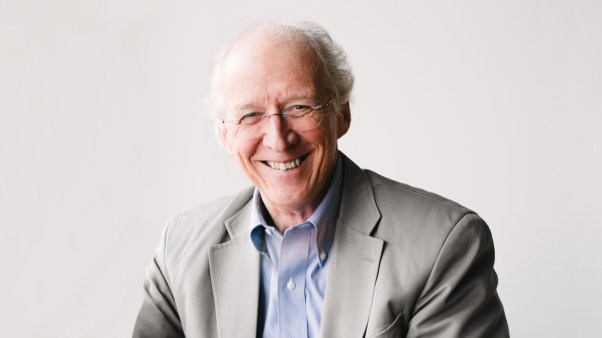“There will be more rejoicing in heaven over one sinner who repents” (Luke 15:7).
Not only is there joy in heaven, but there’s joy on earth when someone comes to saving faith in Jesus. That moment energizes me more than a 37-degree cold plunge followed by the world’s best cup of coffee. Who wouldn’t want a church on fire that joins Jesus in his mission to seek and save the lost?
Yet many pastors I know wish for, long for, and pray for their church to become more instinctively evangelistic, but they feel stuck on how to actually develop that culture. They are reluctant to turn worship services into attractive hype-fests. They don’t have the margin to lead door-to-door campaigns. If we’re being honest, some are insecure about their own evangelistic fruitfulness. How can a pastor call his church to something he struggles with himself? Still, the pastoral burden to lead the church on mission with Jesus remains.
What does it look like to help our people want to help others meet Jesus? Consider four simple ways we can stir up the church toward evangelism: (1) desacralize it, (2) celebrate it, (3) model it, and (4) formalize it.
1. Desacralize the work of evangelism.
“Let me tell you about my new favorite show on Apple TV+!” This declaration represents something fundamental about human nature—we’re wired to be sharers of good news. Whether it’s the latest series to stream, the new burrito shop in town, or hearing that your friend just got engaged, we naturally want to spread the word about the things we delight in most.
Yet somehow, evangelism—literally “good news announcing”—has become unnecessarily coded as an exclusively religious activity. In reality, it isn’t an inherently religious word at all. The Greek word we get it from (euangelizō) is actually a journalistic word: announcing something good has happened, and we want to tell others about it!
By reframing evangelism more accurately for our congregations, we can help our people see evangelism as less of a “religious duty” or a “good Christian check box” and more as a natural overflow of our joy, which is something we already do in a variety of ways in our daily lives. The truth is, all humans are evangelists by nature. So the real question is not whether we evangelize, but what we’re evangelizing about.
2. Celebrate what you want to see replicated.
Enthusiasm is contagious. Think about it: Why is going to a concert or an NBA game in person so much more electrifying than watching it on TV? It’s because we are social creatures, and our loves are thus shaped in community. When we’re surrounded by others who are excited about something, that excitement spreads.
Pastors should celebrate things all the time—meeting budget goals, launching new sermon series, and having to add extra services on Easter. These are all things that warrant applause. But here’s the crucial question: Are we bringing that same thoughtful celebration to the work of evangelism? Are we intentionally highlighting and honoring those in our congregations who are faithfully sharing their faith?
Just as “positive reinforcement” is a basic mechanism of education and formation, it can also transform a church’s posture toward evangelism. Through baptism testimonies, sermon illustrations, pastoral prayers, announcements, and our weekly newsletters, we already have the platforms we need to give thanks for and ascribe honor where honor is due when people in our churches are taking steps of faith toward their friends and family. In doing so, we’re showing, not just telling, a vision that says, “This is who we are as a church. This is what we value and care about.”
3. Model it by addressing non-Christians in your sermons.
While preaching primarily aims to sharpen, disciple, and encourage the body of believers, that is not its whole purpose. Culture is caught far more than it is taught, and this includes how we communicate about our faith. Many Christians either exist in a serious bubble of only Christians or struggle to bridge the gap between the sacred and secular worlds they live in. The result? Christians know how to speak of Christ when around Christians but become clunky and awkward when discussing Jesus with those who don’t follow him.
The solution? As pastors, we need to model better communication. By intentionally addressing non-Christians in our preaching, we model for our congregations how to speak naturally about their faith. This doesn’t need to happen every week, but it does need to happen regularly. This practice does three vital things for your church:
- It teaches them to speak in such a way that assumes non-Christians are listening, because we do.
- It makes people think, Oh, I could invite my non-Christian friend here and the teacher is prepared for that.
- It helps non-Christians who are present feel welcome and more likely to return.
Consider the following example of what that could sound like: “So we’ve been talking about Jesus walking on water. If you don’t call yourself a Christian, this probably sounds insane, and reasonably so. The laws of physics are laws, after all. However, part of why you’re here is because you’re asking the question, Is there something more? Consider this: If you assume for a minute that God does exist and that he is involved in the world he made, then wouldn’t it make sense that he could work beyond natural laws? For the maker of the laws of nature to be over and above those laws of nature is entirely plausible. Even the original witnesses of Jesus’ miracles struggled to believe what their very eyes were seeing, so your skepticism puts you in good company.”
4. Formalize it with a dedicated evangelism environment.
I once believed evangelism should be purely organic, not organized. But just as my wife and I now schedule date nights instead of relying on spontaneous romantic outings like we did when we were newlyweds, what matters most must now find its way into our budgets and calendars. At Ironwood Church, where I serve as teaching pastor, we’ve successfully launched a structured evangelism environment, and the fruits have been wildly encouraging. Here’s our four-step approach:
Step 1: Build your team. We identified people within the congregation who already had a passion for evangelism and invited them to join the core team that would launch the new program. We also offered a “How to Share Your Faith” class, which helped us identify additional volunteers eager to grow in their ability to bring others to faith. Once the class concluded, we invited them to help with the start-up.
Step 2: Choose your curriculum. After considering creating our own original material, we opted for the 321 Course from Glen Scrivener. After all, it was both better than what I’d come up with on my own and scalable and transferable because of its digital format. The course features eight short and engaging videos that guide participants on a hospitable journey toward making a decision for Christ. We structured it as a four-week class, allowing time for solid amounts of discussion and a Q&A time after each session.
Step 3: Launch and promote. We called it “Exploring Christianity” and announced it to the church a few times, asking them to do three things: (1) pray for the class, (2) invite their friends who were “open-but-cautious” toward Christianity, and (3) Participate themselves if they’ve been attending for a while but weren’t yet “all in.”
We also encouraged people to take the class with their friends using simple language such as: “My church is offering a four-week class exploring Christianity. I know you’ve had some questions about church and Jesus. Would you want to take the class with me?”
Step 4: Execute with excellence. We arranged participants in groups of four to six, each led by a trained “host” from the volunteer team. These hosts focused on facilitating discussion and showing hospitality. Rather than pressuring decisions on the spot, they followed up with participants through casual meetings over coffee or lunch.
The results: In our first run, 7 out of the 30 who enrolled were baptized. More importantly, we created an environment where seekers can get acquainted with the Christian faith and members can contribute to a meaningful culture of evangelism in our church.
From strategy to second nature
Seth Godin’s definition of culture is helpful here: “People like us do things like this.” Inculcating evangelism through desacralizing, celebrating, modeling, and formalizing all contribute to establishing norms among a community. With intentional planning and strategic work, pastors, even busy and insecure ones, can move the needle on the evangelistic culture of the churches they lead. You almost certainly won’t be able to pull off all four of these immediately, but even doing one or two of them will begin to shift your church’s instincts when it comes to the lost.
True transformation will take time. But as these practices shape your church’s culture, watch what emerges: Your congregation will grow in evangelistic zeal. As the Spirit works, you may soon find that stories of life change become a regular rhythm. Congregants will excitedly share about the gospel conversations they’re having with neighbors and coworkers. The once hesitant, “Should I share my faith?” transforms into an eager “How can I share it better?” When the church actively and prayerfully joins Jesus on his mission, our Lord is pleased and our own faith is set on fire afresh. Let’s give heaven a reason to rejoice!
Seth Troutt is the teaching pastor at Ironwood Church in Arizona. His doctoral studies focused on Gen Z, digitization, and bodily self-concept. He writes about emotions, gender, parenting, and the intersection of theology and culture. Seth and his wife, Taylor, have two young children.









